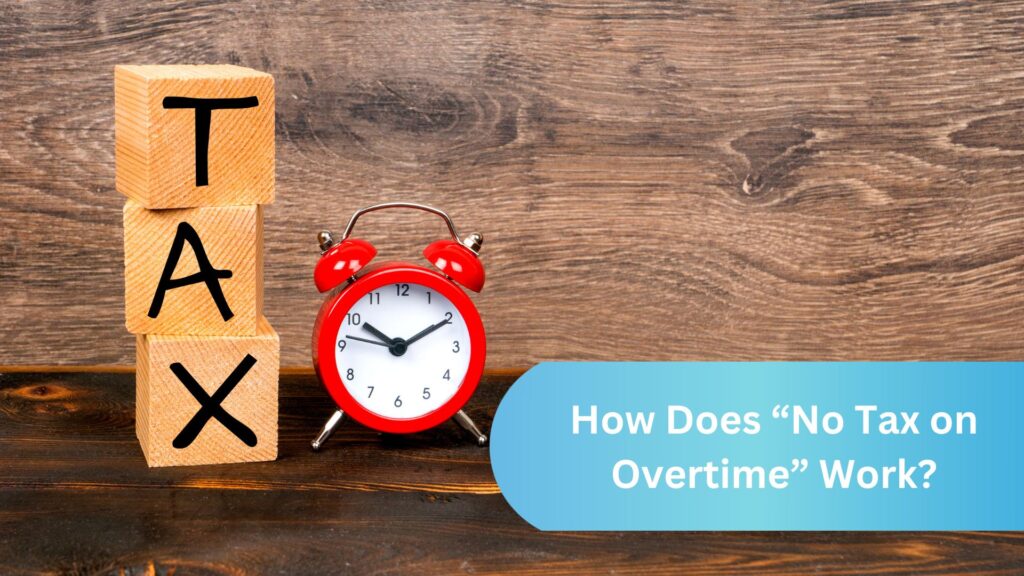If you’re an hourly worker who often puts in extra hours, you’ve probably heard about the new “No Tax on Overtime” provision introduced in 2025. This law—part of the One Big Beautiful Bill Act (OBBBA)—was designed to help hardworking Americans keep more of what they earn by providing a federal income tax deduction on qualifying overtime pay.
But what exactly does “no tax on overtime” mean? Does it make your overtime completely tax-free? And who qualifies for it?
Let’s break down how the new rule works, who’s eligible, and how to make sure you get every dollar you’re entitled to when filing your taxes.
What Changed Under the New Law
Before 2025, overtime pay was taxed just like regular income. That meant every extra hour you worked increased your taxable income — and possibly bumped you into a higher tax bracket.
Under the new law, however, the government introduced a deduction for qualified overtime earnings.
This isn’t a full tax exemption — your overtime isn’t completely free from tax — but it allows you to deduct the “premium” portion of your overtime (the extra half-time pay you earn after 40 hours per week) from your federal taxable income.
That deduction can significantly reduce your tax bill if you regularly work overtime.
The new rule applies retroactively from January 1, 2025, and will remain in effect until December 31, 2028, unless Congress decides to extend or amend it.
Who Qualifies for the Overtime Tax Deduction
Not everyone is eligible for the “no tax on overtime” deduction. To qualify, you must meet these criteria:
-
You must be an hourly, non-exempt employee.
Only workers covered under the Fair Labor Standards Act (FLSA)—that is, those who are already entitled to overtime pay—can claim this benefit. Salaried or exempt employees generally do not qualify. -
You must meet income limits.
-
Single filers earning under $150,000 annually qualify in full.
-
Married couples filing jointly qualify if their combined income is under $300,000.
-
-
Only the overtime premium is deductible.
This means you can only deduct the extra half-time earned for hours beyond 40 per week—not your entire paycheck.
If your income is above the threshold, your deduction gradually phases out. For example, someone earning $160,000 may still get a partial deduction, but not the full amount.
How Much Tax Money Can Deduct?
The maximum deduction is:
-
Up to $12,500 per year for single filers
-
Up to $25,000 per year for joint filers
These amounts apply to the overtime premium portion only. For most hourly workers, this translates to thousands of dollars in tax savings over the course of a year.
What is Still Taxed?
It’s important to understand that this deduction only affects federal income taxes. You’ll still owe:
-
Social Security and Medicare taxes (FICA)
-
State income tax, unless your state adopts its own overtime exemption
-
Local taxes, if applicable
Also, not all types of extra pay qualify. Bonuses, shift differentials, and holiday pay are still fully taxable and are not considered part of the FLSA overtime premium.
How to Claim the “No Tax on Overtime” Deduction?
Claiming the deduction is simple — and you don’t need to itemize your taxes.
It’s considered an above-the-line deduction, meaning you can take it even if you use the standard deduction.
Here’s how it works:
-
Your employer must report qualified overtime separately on your W-2 form (or similar year-end statement).
-
When filing your 2025 tax return (in 2026), you’ll include this amount on the designated line for overtime deductions.
-
The IRS will verify it based on your employer’s payroll reporting.
If you use tax software or a CPA, they’ll guide you through the entry automatically.
Example: How the Overtime Tax Deduction Saves You Money
Let’s say Sarah, an hourly employee, earns $35,000 per year in regular wages and makes an extra $5,000 in overtime premium pay.
Without the new deduction, her entire $40,000 would be taxable income.
With the “No Tax on Overtime” rule, she can deduct that $5,000 from her taxable income — meaning she’s taxed as if she earned $35,000.
If she’s in the 12% federal bracket, that’s $600 in savings just from this new provision.
Why This Law Matters
The No Tax on Overtime law was introduced to reward employees who go above and beyond their regular work hours. It provides meaningful relief for those in industries like healthcare, manufacturing, logistics, and retail — where overtime is a major part of take-home pay.
For many middle-income families, this deduction could mean hundreds or even thousands in extra savings each year — money that can go toward bills, savings, or emergencies.
Key Takeaways
-
The “No Tax on Overtime” rule allows qualifying workers to deduct overtime premiums from their federal taxable income.
-
It applies to hourly, non-exempt employees under FLSA rules.
-
You can deduct up to $12,500 (single) or $25,000 (married) per year.
-
You’ll still owe FICA, state, and local taxes on that income.
-
The law is active from 2025 through 2028 and may be extended.
This is an excellent opportunity for hourly workers to keep more of what they earn. If you frequently work overtime, check your pay stubs, make sure your employer reports overtime correctly, and claim the deduction when you file your taxes.


